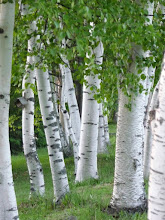After posting about our visit to Trebin Farms BandB for a goat cheese making workshop, I have had a few comments and questions about the process. Since the workshop was introductory, and we learned to make chevre only, we really are mere novices. I can walk you through the process, but I highly recommend that you do some of your own research if you are thinking of trying this on your own.
First, you must decide what kind of goat's milk you will use and where you will find it. Raw vs. pasteurized is a huge debate, with wisdom on both sides. As you may guess, politics and regulations play as big a part in this controversy as medical opinions and farming practices. You will need to do your own homework on this issue.
First, you must decide what kind of goat's milk you will use and where you will find it. Raw vs. pasteurized is a huge debate, with wisdom on both sides. As you may guess, politics and regulations play as big a part in this controversy as medical opinions and farming practices. You will need to do your own homework on this issue.
someday, when we are living in vermont full time,
maybe gretta will come be our goatherd...
and we'll have our very own milking station.
maybe gretta will come be our goatherd...
and we'll have our very own milking station.
Once you've procured your milk, heat one gallon til it reaches 86 degrees F. You will need a metal kitchen thermometer for liquids. This is a magic number, and you may need to finesse things with your pan and stove burner. (Some folks turn the heat off just before the milk reaches 86 degrees, knowing that it will continue to heat even once it's removed from the heat.) If the temp goes a bit above 86 degrees, let it cool a few minutes.
Add a packet of starter and swirl very gently.
Add the rennet, stirring gently to combine. (Rennet comes in several types, all available here, starter as well).
Cover and set aside at room temperature for 12 hours. (As close to 72 degrees as you can manage. At our house in the winter, this will have to be near a heat source)!
Line a colander with fine muslin (finer than traditional cheesecloth). Carefully slice a sharp knife through the cheese, creating small cubes of curd. Gently ladle the curds out of the whey and into the colander. Tie up the four corners of the muslin, and hang the bag over the sink for 6-12 hours to drain, until the curds are as firm as you want them to be.
You may want to roll the cheese in a mixture of herbs before storing in a covered container in the fridge for up to one week. Goat cheese may also be frozen, but the texture does become a bit grainy when defrosted.
Have you made cheese (any variety) at home ? How did it turn out?
Add a packet of starter and swirl very gently.
Add the rennet, stirring gently to combine. (Rennet comes in several types, all available here, starter as well).
Cover and set aside at room temperature for 12 hours. (As close to 72 degrees as you can manage. At our house in the winter, this will have to be near a heat source)!
Line a colander with fine muslin (finer than traditional cheesecloth). Carefully slice a sharp knife through the cheese, creating small cubes of curd. Gently ladle the curds out of the whey and into the colander. Tie up the four corners of the muslin, and hang the bag over the sink for 6-12 hours to drain, until the curds are as firm as you want them to be.
You may want to roll the cheese in a mixture of herbs before storing in a covered container in the fridge for up to one week. Goat cheese may also be frozen, but the texture does become a bit grainy when defrosted.
Have you made cheese (any variety) at home ? How did it turn out?






Have I ever made cheese
ReplyDeletehee hee
I never thought I would ever be asked that question...
but I eat it :)
Mom, all I want for Christmas is homemade goat cheese!!!
ReplyDelete(And maybe a baby goat.)
At Heifer we heated it much hotter, and then added vinegar instead of rennet. The curds formed so fast we ate it on the spot. At home the process was much slower for us - glad to read your description!
ReplyDelete